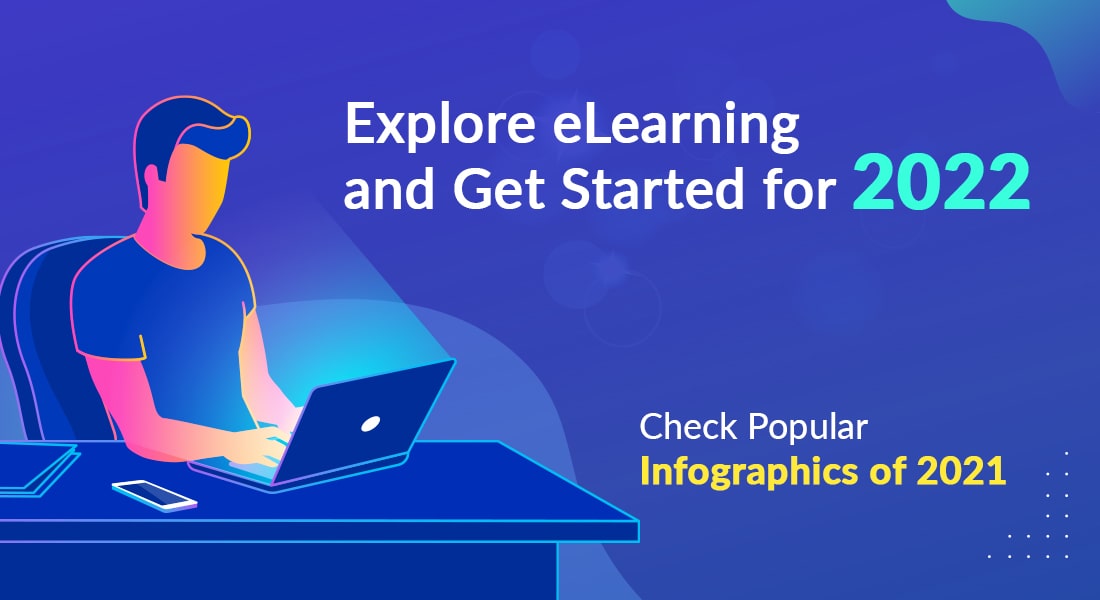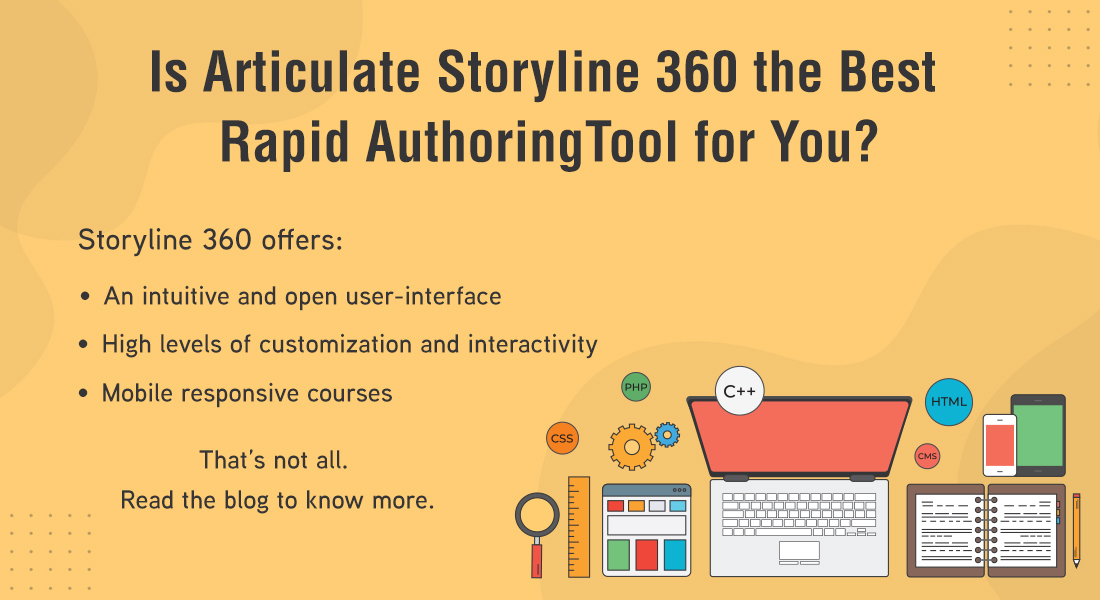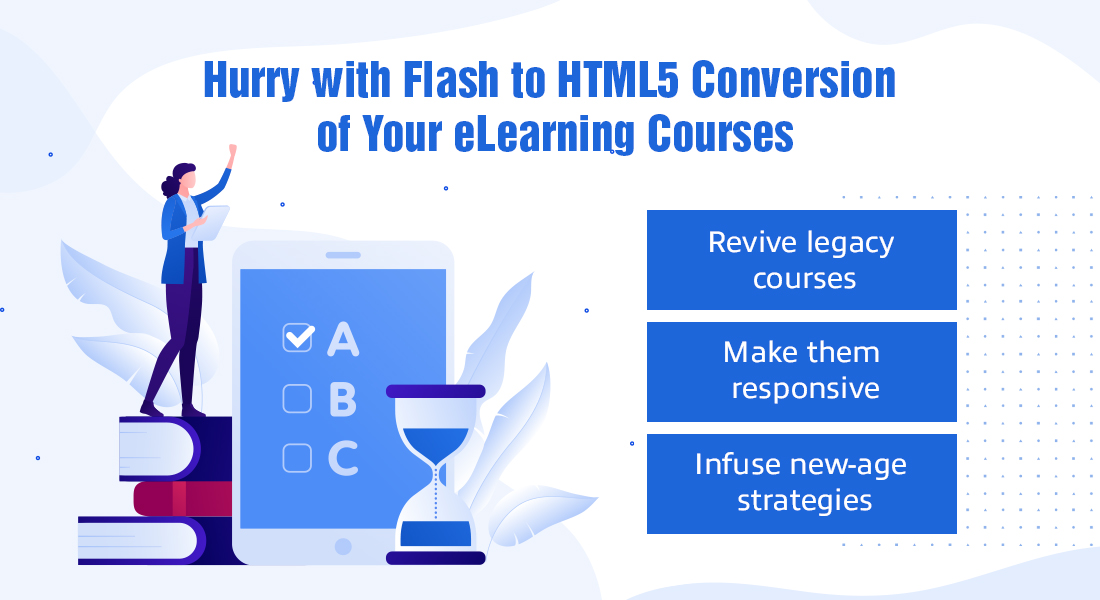A Visual Recap of eLearning – Popular Infographics of 2021

ELearning was the second most popular training method even before the pandemic hit the world. And with COVID-19, came social distancing and the work from home culture, making classroom training practically impossible. And so, most organizations are increasingly opting for online training and development programs to ensure uninterrupted learning. And the trend for virtual training is not going to go away anytime soon, even after the pandemic ends.
Popular Infographics of 2021 on eLearning
- 4 Reasons to Crown Rapid eLearning the Champion of Corporate Training
- What Training Managers Should Know about Instructional Design Strategies
- The Secret to Developing Blended Learning Assets Quickly Revealed
- Everything You Wanted to Know about eLearning Translations
- Which Phase of eLearning Implementation Are You In?
Explore this beginner’s guide to virtual instructor-led training.
Here’s a list of infographics that’ll take you through rapid eLearning, instructional design strategies, blended learning, eLearning translations, and eLearning implementation. If your organization is already into eLearning, then these infographics will add to your existing skills and understanding.
Top 5 Infographics of 2021
1. 4 Reasons to Crown Rapid eLearning the Champion of Corporate Training
Rapid eLearning is ideal for corporate training because it delivers business results rapidly in the face of tight budgets and deadlines. It:
- Enables quick, budget-friendly design and development
- Does not compromise on quality or creativity
- Offers hassle-free translations and conversions
With the new normal of most employees working from home, classroom training is no longer a viable option. All planned initiatives involving face-to-face training have gone for a toss, leaving organizations with no other choice but to go the digital way for training.
Rapid eLearning is not just a temporary fix for this time of crisis. It is, in fact, a robust process that addresses major training needs. With COVID-19 showing no signs of departing anytime soon, almost all global companies are going for eLearning and virtual employee training.
If you need any more convincing, here’s an infographic that spells out the 4 reasons to crown rapid eLearning the champion of corporate training.
2. What Training Managers Should Know about Instructional Design Strategies
The main goal of instructional design is to increase learner engagement. Effective instructional design strategies (high-level approach of how a topic will be taught) help turn passive learners into active participants. The choice of the ID strategy depends on the:
- Target audience
- Type of content (the subject matter)
- Learning objectives
- Media elements (including audio)
Whether you are an experienced ID, a new entrant, or making your way in the world of L&D, a basic understanding of ID strategies will take you a long way in creating effective, engaging courses for your learners. So, let’s explore this infographic for the top 5 Instructional Design strategies that will motivate and engage your learners.
3. The Secret to Developing Blended Learning Assets Quickly Revealed!
Blended learning is a great way of providing learners the best of two worlds – classroom and online training. It enables learners to have control of their own learning through self-paced modules and benefit from interacting with instructors face-to-face.
Blended learning includes instructor-led-training, online training, and performance support. Here are a few formats that can be used in your blended learning strategy:
Live Formats
- Instructor-led training
- On-the-Job training
Virtual Collaboration: Synchronous
- Virtual instructor-led training
- E-mentoring
Social Learning
- eLearning modules
- Simulations
- Scenarios
- Online assessments/quizzes
Performance Support Tools
- Job-aids
- How-to videos
- Knowledge databases
- Mobile applications
- Performance/decision support tools
While it is good to see such a variety of digital assets that can be used in the framework of blended learning, the question remains – how do we develop online assets for blended learning quickly?
So, here’s an infographic that talks about 4 quick tips on using rapid eLearning to develop blended learning assets quickly.
- Balance classroom and online training
- Go ahead with rapid prototyping
- Convert existing ILT (instructor-led training) material to eLearning
- Repurpose VILT (virtual ILT) content for job-aids
4. Everything You Wanted to Know about eLearning Translations
It is becoming increasingly important for organizations to create and sustain a viable work-environment for their globally dispersed workforce. Several studies have shown that training learners in their native languages is more effective in accelerating time to proficiency.
It also enables organizations to deliver globally-uniform, locally relevant training. However, organizations may be grappling with questions such as:
- What does eLearning translations involve?
- Where does localization come in?
- How do we select the right translation partner?
- Are there any tools available that can be used for eLearning translations?
Here’s an infographic that’ll answer all your questions. Go ahead, explore it, what are you waiting for?
Want more insights? Get this eBook on eLearning translations now!
5. Which Phase of eLearning Implementation Are You In?
The reach of eLearning has rapidly increased in the last few years and even nay saying organizations have opted for it due to the pandemic.
Well-designed eLearning courses:
- Help turn passive learners into active participants in the absence of the instructor
- Can be reused for different learner groups
- Offer uniform, consistent training with easy translations
- Reduce paperwork associated with evaluations
eLearning is being opted by many organizations because of the wide range of advantages it offers – accessibility, scope for continual learning, learning at learner’s own pace, etc.
With most organizations implementing eLearning, different organizations may be at different stages in their eLearning journey. Your organization may be in one of these 4 main stages of eLearning adoption:
- Just getting started, experimenting with videos and webinars
- Scaling up eLearning from just a few departments to across the organization
- Centralizing training to make learning resources available without duplications and inconsistencies
- Advancing in the journey, using learning analytics to measure the impact of learning
Here’s an infographic that will take you through the different phases of eLearning implementation.
End Note
So, these were the top 5 eLearning infographics from 2021. It’s now time to buckle up for the new year ahead. Here’s an eBook on the trends of 2022 that will help you with that.
Happy Holidays!!



![Outsourcing your Flash to HTML5 Conversions? 5 Questions to Ask First! [SlideShare]](https://blog.commlabindia.com/hubfs/Imported_Blog_Media/flash-html5-conversions-outsourcing-slideshare.jpg)

